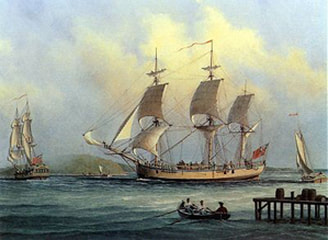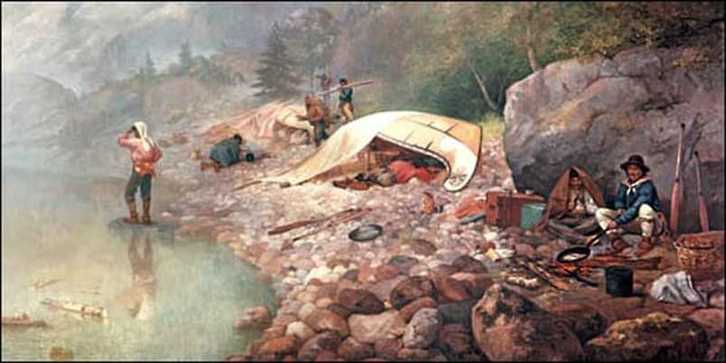BC Social Studies 9
|
In Social Studies, it is our hope that students learn more about themselves, each other, and the world we inhabit. In this course, we hope that students develop critical thinking skills and come to know how Canada has been influenced by ideas and struggles for power, interaction with the environment, and questions of identity. Why Canada? Given the competing narratives, opposing forces, and power struggles, how did it come to be and what kinds of stories and visions would guide its development? Whose stories and visions would be left out?
Students will be successful in this course when they can demonstrate their capacity to interpret evidence, assess and defend positions, and conduct inquiry related to our course topics. Students completing Social Studies 9 will be able to tell a fuller, more inclusive set of stories about Canada and have a sense of their own place in Canada’s past, present, and future. Sample Course OutlineHere is an example of Course Introduction and Outline used in the 2016/17 school year.
|

"Indian Encampment on Lake Huron" by Paul Kane (oil on canvas c.1845). It is often said that sources like paintings "conceal as much as they reveal." Kane's travels and portrayals of Indigenous life in Canada, though influenced by embellishment and his European identity, were/are a valuable source for ethnographers -- people who study culture based on evidence. Why might this painting be an important source?
|
For Teachers
The curriculum for Social Studies 9 has shifted from previous years. The introduction of historical thinking concepts as the basis for competencies places more emphasis on "thinking like a historian" and critical thinking in general. The content has shifted as well. Although teaches can choose from multiple time periods and contexts to build understanding and develop competencies, the core historical content has moved to 1750-1919. Thus most teachers and resources or texts have dropped events from before 1750 (such as the English Civil War), and added events in Canada/North America from 1815-1914. Some teachers and schools leave WWI (1914-1919) to Social Studies 10 teachers, some keep it in Social Studies 9, while others overlap or emphasize different aspects of the Great War. What is clear is that the potential volume of content has expanded significantly from the pre-2017 curriculum. Therefore, teachers need to either design learning around a fast-paced survey of historical themes and events, or they need to be selective about the amount of content they choose to use from the wide array of possibilities. Further, a perceived emphasis on history in the revised curriculum, as opposed to the social studies, means that teachers need to fight the urge to make this course strictly about historical themes and events, and find ways to integrate political, philosophic, economic, environmental, sociological, anthropological, and especially geographic thinking. Of course, what's Social Studies if it does not also connect with current events and topics of importance to today's society.
Unit 1 The Age of Invention
1A Industrialization: Why Britain?
1B Changes in Agriculture, Textiles, and Power Inventions Assignment 1C Lessons from Mr. Clifford 2016 UNBC student teacher Audio Clip of debate over impact of Enclosure Unit 2 Culture Conflict Colonization2A Climate and Physical Geography of Canada
Big map - climate and physiography 2B Background to the Seven Years War 2C Battle for Quebec Conquest of New France slideshow Battle Plan Assignment/Simulation Big map / template for the Battle Plan Blog link for follow-up response to the simulation 2D The Canadian Fur Trade Fur Trade slideshow (2E Restless Earth - more about Canada's geography) 2F The West Coast - exploration and early history Unit 3 Building a Nation3A The American Influence
3B Pioneer Life New Home Simulation 3C The Reform Era 3D Confederation Confederation Era Slideshow Unit 4 The Many Wests4A Red River and the Metis
4B CPR and the Northwest Rebellion 4C Big Notes-Map of the Pacific Northwest Outine map of the Pacific Northwest with Notes Boxes 4D The Rush for Spoils: BC to 1864 4E Growth of BC from 1864-1914 Slideshow - Ten key events from Early BC History 4F Come to Canada: The Prosperous Laurier Era 4G Canada Enters the 20th Century Skookum Story Project Family Tree starter template Unit 5 The War to End War5A Global Background to WWI
Slideshow notes on causes of WWI 5B Canada's Involvement in WWI Slideshow notes on Canada at the start of the Great War Slideshow notes on Canada's key battles in WWI 5C The Home Front in WWI Slideshow notes on Canada at Home WWI 5D The Aftermath of WWI Slideshow notes on Treaty, Flu, Russian Rev WWI Letter Activity |
Webriver Social Studies BlogThis blog -- http://webriver.blogspot.ca -- is for online assignments and discussion in Social Studies 9, 10, and 11. We will use this sometimes for our class.
Course ExpectationsYour teacher does not have many rules... mostly it is expected that students will operate with a few principles in mind:
The Gale and The SallyThis is an artist's representation of the British transport ship The Gale, likely with The Sally in the background. They sailed from Rotterdam and arrived in Halifax Sep. 9th, 1752, with German and French immigrants who were brought over to make Nova Scotia "Protestant." My wife has a number of ancestors who were aboard these ships, part of the original inhabitants of Lunenburg, Nova Scotia and later the pioneers of the Sydney area of Cape Breton Island. Here's a bit more about their story (video clip).
Grave of John Fraser at Barkerville |
Think it Through
This is one of my favorite paintings. It was introduced to me by a former colleague as a black-and-white photo in an old textbook. He even slept under his canoe once just to see what it was like. The scene depicts an overnight encampment of Voyageurs, employees of the Hudson Bay Company, somewhere in the vast North West Territories of British North America. The artist created the painting from sketches she made in the 1860s while travelling with her husband, an official with the Hudson Bay Company.
What use can we make of a source like this? Try answering question like the ones that follow.
What catches your eye in this artwork? What elements do you see in the painting? What activities can you detect? Do you think the people in the scene have specific roles? From whose perspective is this scene viewed? Is it a primary or secondary source? What does the painting say about the fur trade? From what you know of the fur trade, do you think this painting is a representative depiction, or a reliable source for gathering information? Do any of the views, values, or beliefs of the artist (as you understand them) come through in the painting? How would you describe the artist's "privilege" in regards to the subject (the degree to which her perspective on the fur trade has authority, special access, blindspots, authenticity, etc.). Every painting tells a kind of story about its subject -- what other stories are there to tell about the fur tade (or voyageurs specifically) that are not told by this painting? What other sources would you turn to to get a more complete understanding of the fur trade? Is this painting really about the fur trade, or is it about other things such as travel, or companionship? How would you determine what it is actually about? What else can you say about this painting?
What catches your eye in this artwork? What elements do you see in the painting? What activities can you detect? Do you think the people in the scene have specific roles? From whose perspective is this scene viewed? Is it a primary or secondary source? What does the painting say about the fur trade? From what you know of the fur trade, do you think this painting is a representative depiction, or a reliable source for gathering information? Do any of the views, values, or beliefs of the artist (as you understand them) come through in the painting? How would you describe the artist's "privilege" in regards to the subject (the degree to which her perspective on the fur trade has authority, special access, blindspots, authenticity, etc.). Every painting tells a kind of story about its subject -- what other stories are there to tell about the fur tade (or voyageurs specifically) that are not told by this painting? What other sources would you turn to to get a more complete understanding of the fur trade? Is this painting really about the fur trade, or is it about other things such as travel, or companionship? How would you determine what it is actually about? What else can you say about this painting?

